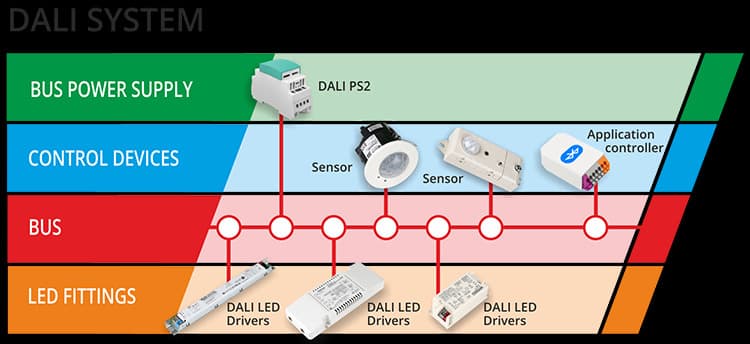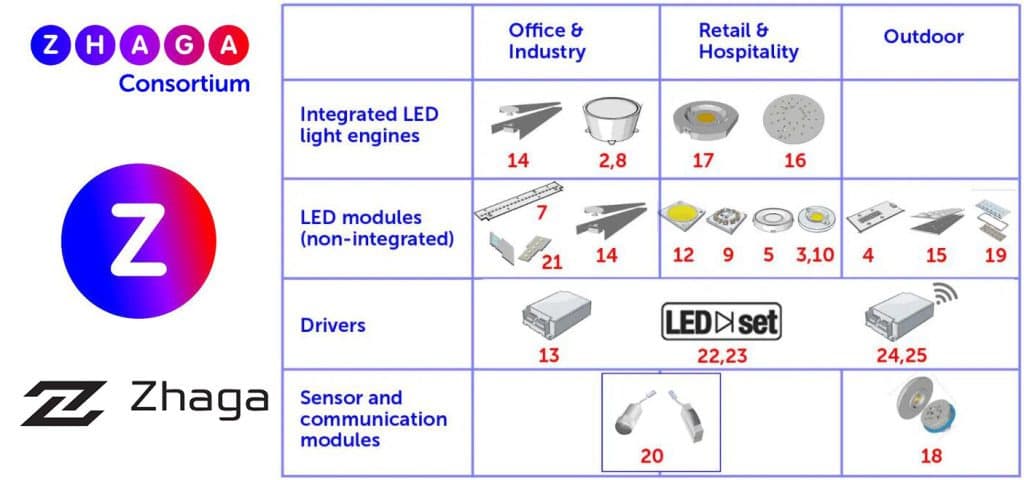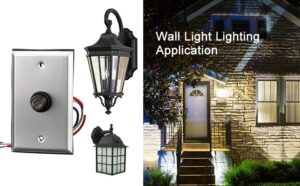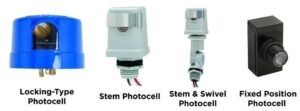Future-Proofing Outdoor Lighting: A Deep Dive into Zhaga-D4i Control Devices, DALI Integration, and the Z10 Socket Revolution
Introduce
Urban lighting is no longer just about visibility. Cities around the world are shifting fast to urban IoT lighting. Streetlights now serve as smart data hubs. Zhaga-D4i speeds this shift. It is a standard that lets light fixtures and control devices talk quickly and reliably, with smooth communication.
Pair DALI control devices with a Z10 socket. Your lights become more flexible, energy smart, and ready for tomorrow. Cities, makers, and integrators now share one standard. It ensures brands and products work well together.
Work with smart streetlight controllers. Plan large upgrades. Need to meet LED luminaire rules? You must fully understand this whole system first.

What Is Zhaga-D4i, and Why Does It Matter for Smart Lighting?
Do you want a lighting system that grows with your city’s needs? One that won’t turn obsolete in a few years? Zhaga-D4i solves that challenge by standardizing both the physical and digital interfaces between luminaires and control devices.
It’s a joint certification program from the Zhaga Consortium and the DALI Alliance. It combines the mechanical specs in the Zhaga Books with the DALI data exchange protocols. Put simply, it lets your lighting system use plug-and-play parts, from wireless nodes to photocell sensors. No custom engineering is required at all.
Zhaga Book | Application | Device Types Covered |
Zhaga Book 18 | Outdoor Lighting | Type A (Network Lighting Controllers) & Type B (Sensors) |
Zhaga Book 20 | Indoor Lighting | Type C (Smart Control) & Type D (Standalone Control) |
This dual standard means manufacturers can produce products that work anywhere in the world without complex integration. For example, a network lighting controller certified under Book 18 can be installed in any compatible luminaire, regardless of brand.
How Do DALI Controllers Work With Zhaga-D4i?
If Zhaga-D4i defines the “socket and shape,” DALI control devices define the “language” your lighting speaks. DALI (Digital Addressable Lighting Interface) is a communication protocol that enables each luminaire to send and receive data.
D4i-compliant DALI drivers can store and share:
- Energy consumption history
- Diagnostics (e.g., LED temperature, voltage irregularities)
- Asset information (model, manufacturer, operating hours)

Pair these drivers with Zhaga Book 18 or Zhaga Book 20 devices. Your lighting system will then support remote monitoring and predictive maintenance. That means city engineers can detect a failing photocell for street light or dim, faulty luminaires without sending technicians on-site unnecessarily.
You can learn more about compatible DALI-based products from Long-Join’s lighting control solutions.
What Types of Zhaga-D4i Devices Are There, and What Do They Do?
Understanding device classification is essential when specifying smart streetlight controllers or planning for modular upgrades. Zhaga-D4i devices are classified by type:
Type | Role & Function | Book Reference | Power Source | Typical Use Case |
A | Wireless network lighting controller | Book 18 | 24V AUX | Smart city nodes with 4G/5G or LoRaWAN |
B | Environmental or motion sensor | Book 18 | Low power (passive/active) | Adaptive dimming, traffic monitoring |
C | Advanced indoor smart control | Book 20 | 24V AUX | Building automation integration |
D | Standalone indoor control | Book 20 | Single master | Conference room or retail lighting control |
This modularity is why cities can install Book 18-ready streetlights today and add a light photocell sensor, air-quality monitor, or photoelectric sensor years later without replacing the entire luminaire.
Why Is Testing and Certification Important for Zhaga-D4i Products?
Have you ever bought a gadget only to find it doesn’t work with your existing setup? That’s exactly what Zhaga-D4i certification prevents.
Certification involves two steps:
- D4i Compliance Testing– Ensures DALI Part 351 and related standards are met.
- Zhaga Certification– Verifies Book 18 or Book 20 compliance via an authorized test lab.
Without this certification, a photocell or photo switch sensor might fit the luminaire. But it may not talk to it correctly. Certified products ensure cross-brand compatibility. They lower the chance of costly stranded assets during future upgrades.
Why Does the Zhaga-D4i + Z10 Pair Works So Well?
Think of the Zhaga standard as the language. D4i is the grammar, and Z10 socket is the universal plug. Here’s why this trio matters:
- Scalable Modularity– The Z10 socketallows tool-free upgrades. A city can start with simple street lights. Later, add photocell modules, motion sensors, or wireless nodes with no rewiring.
- Cross-Vendor Compatibility– Certified parts from many makers work together. This gives cities more flexible buying.
- Future-Proof Architecture– DALI-based diagnostics help. Automatic light sensorsplug in, preparing networks for evolving smart-city uses.
- Lower Maintenance Costs– Swapping a faulty photocell street lightmodule takes minutes, reducing downtime and service costs.
How Does Zhaga-D4i Shows Up in Real-World Projects?
Around the world, cities use Zhaga-D4i. It helps connect lighting systems with other smart city services. Examples include:
- Smart Streetlights: We pair a dusk-to-dawn photocellwith traffic analysis. The lights adjust brightness in real time.
- Solar Integration: Using Zhaga-based solar controllers to manage off-grid LED luminaire standards.
- Smart Poles: Adding 5G antennas, public Wi-Fi, EV charging, and environmental sensors — all plug-and-play via the Z10 socket.
For instance, Long-Join’s JL-700Z Zhaga socket allows streetlight poles to act as multifunctional hubs, reducing installation complexity for cities.
Why Should Manufacturers Act Now to Integrate Zhaga-D4i?
Global rules now push for systems to work together. If you delay adopting Zhaga-D4i, you could lose bids that require it. Early integration:
- Expands your product’s market reach
- Ensures compliance with LED luminaire standards
- Positions your brand as a smart lighting leader

For manufacturers, aligning with Zhaga Book 18 and Zhaga Book 20 is not just about technical compliance — it’s about meeting the future needs of urban IoT lighting projects.
Conclusion
As cities get smarter and greener, Zhaga-D4i, DALI control devices, and the Z10 socket work together. They form a common language for modern lighting. This framework turns streetlights from simple lamp poles into smart assets. They can monitor the environment, improve energy use, and share data in real time today.
Cities, integrators, and photocell suppliers adopt this ecosystem today. It brings far fewer compatibility issues tomorrow. Here’s the point: for a smart, open, and future-proof lighting network, choose Zhaga-D4i. It’s the best path for you right now.
External Links:
●https://www.zhagastandard.org/media/acfupload/20210526_Zhaga-book20_-_ED1.1_-_public.pdf
●https://www.zgsm-china.com/blog/performance-requirements-of-led-luminaires.html
●https://en.wikipedia.org/wiki/Charging_station
●https://www.dali-alliance.org/dali2/
●https://www.dali-alliance.org/





